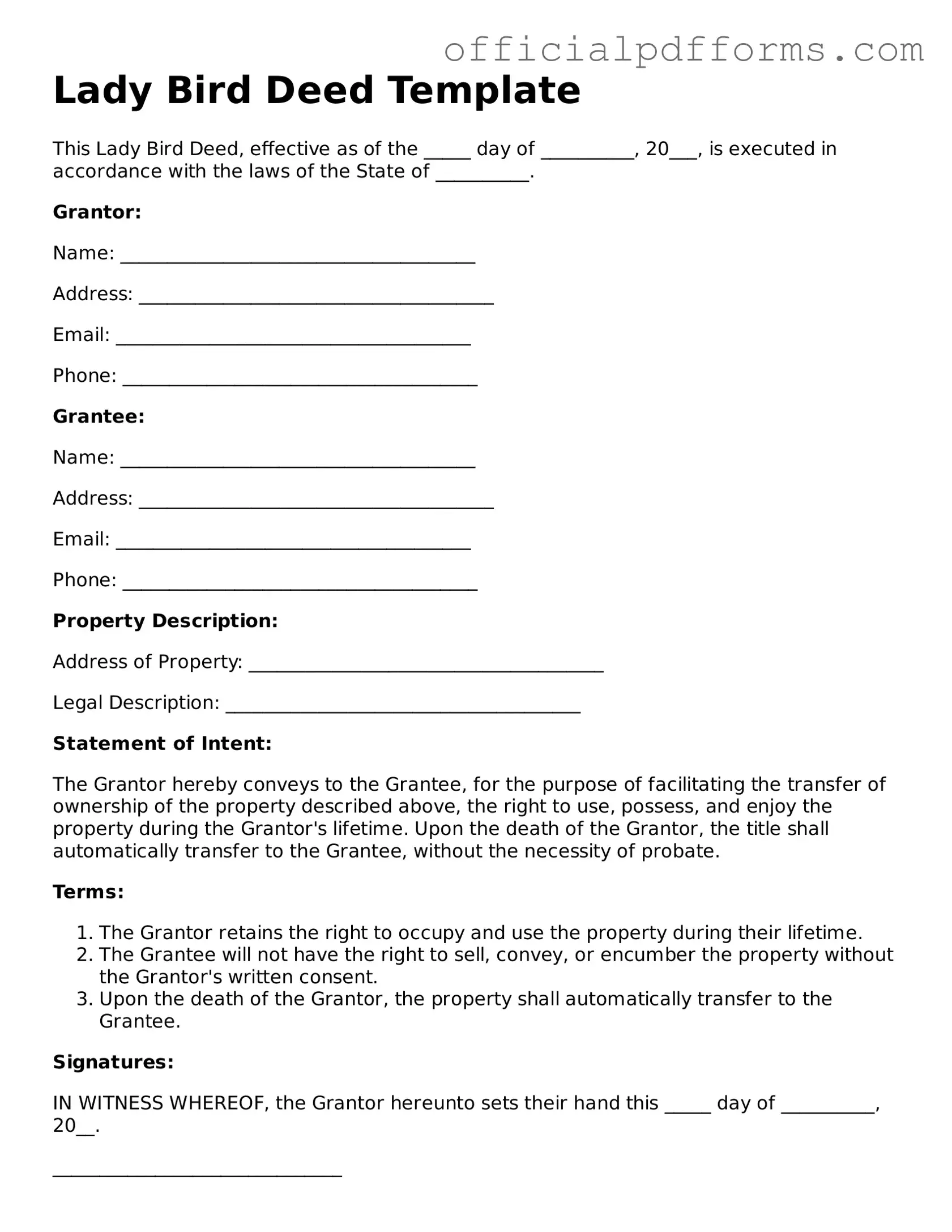Valid Lady Bird Deed Document
The Lady Bird Deed is a unique estate planning tool that allows property owners to transfer their real estate to beneficiaries while retaining control during their lifetime. This deed facilitates a smooth transfer of ownership upon death, avoiding the often lengthy and costly probate process. Understanding its benefits and implications can significantly enhance your estate planning strategy.
Ready to take the next step? Fill out the form by clicking the button below.
Access Form Online
